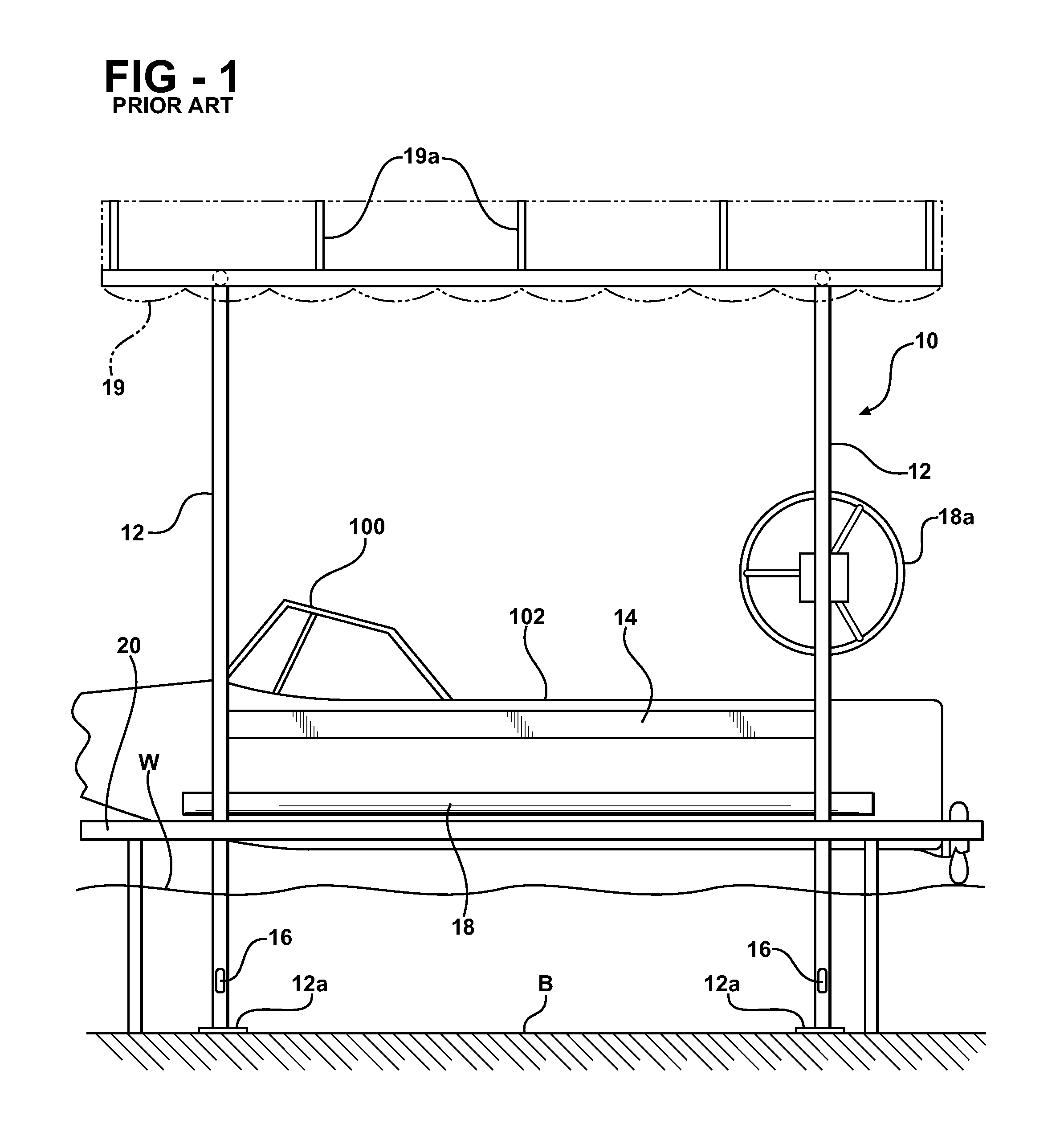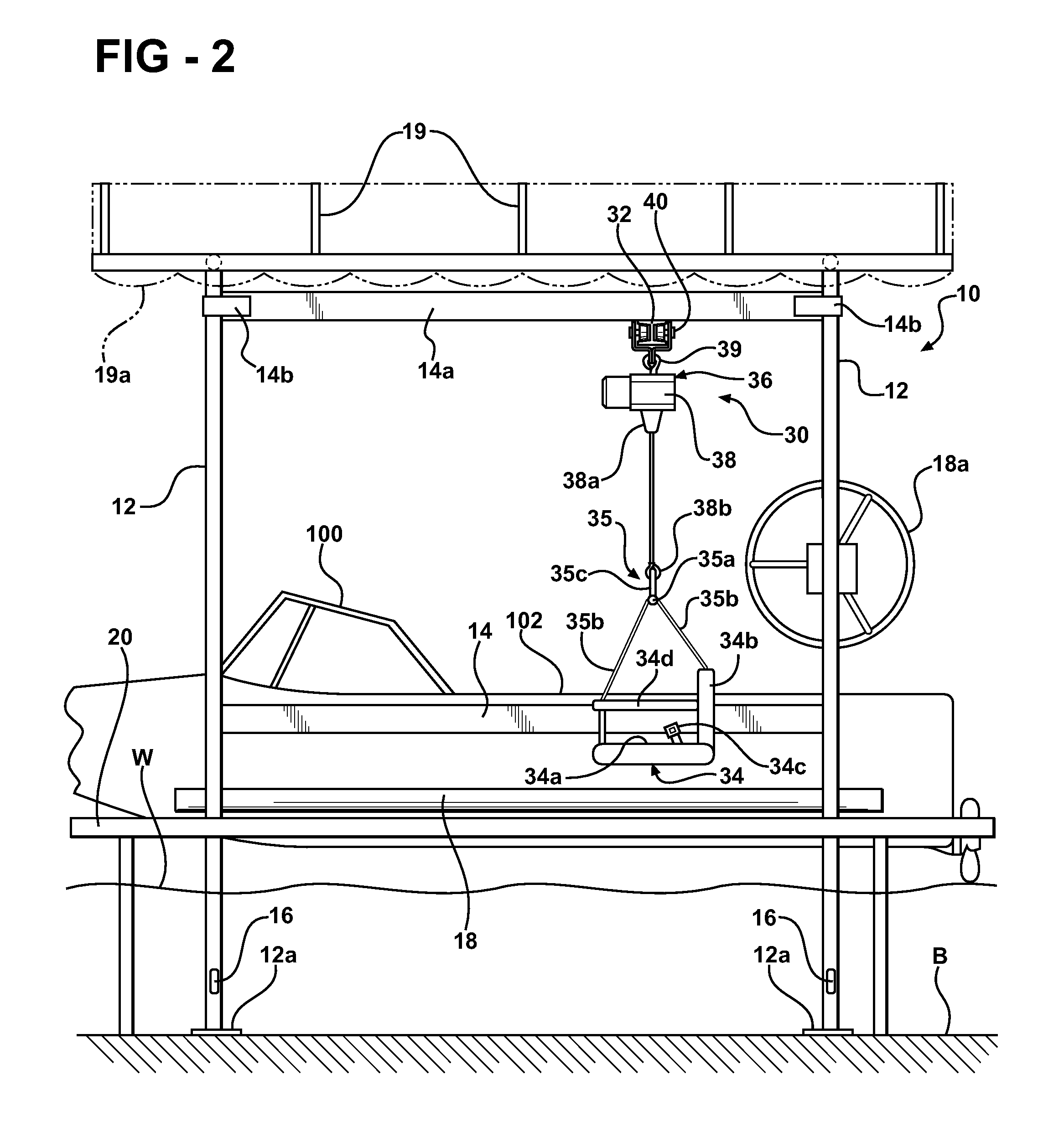Dock to boat transfer aid for handicapped boaters
a boater and lift technology, applied in the field of lifts for transferring handicapped boaters, can solve the problems of occupying significant space, affecting difficulty or risk for them to go back and forth between docks, and reducing the safety of passengers,
- Summary
- Abstract
- Description
- Claims
- Application Information
AI Technical Summary
Benefits of technology
Problems solved by technology
Method used
Image
Examples
Embodiment Construction
[0024]Referring first to FIG. 1, a conventional boat lift 10 containing a boat 100 is illustrated next to a seasonal (in for spring, out for winter) dock 20. Illustrated boat lift 10 represents a typical seasonal, shallow-water boat lift in somewhat schematic fashion, since many different makes and models of this type of boat lift are known and commercially available and will lend themselves to use with the invention with only minor modification. Boat lift 10 generally includes four or more supporting pipe columns 12 anchored on lake bottom B with feet 12a; side frame members 14 connecting and bracing pipe columns 12 on the long sides of the boat lift; and fore and aft end frame members 16 connecting and bracing pipe columns 12 on the ends of the boat lift, below the waterline W to provide clearance for the boat 100 as it enters and exits the boat lift. End frame members 16 generally have a shallow V-shape or curve to give clearance for the hull of boat 100 when the boat is in the w...
PUM
 Login to View More
Login to View More Abstract
Description
Claims
Application Information
 Login to View More
Login to View More - R&D
- Intellectual Property
- Life Sciences
- Materials
- Tech Scout
- Unparalleled Data Quality
- Higher Quality Content
- 60% Fewer Hallucinations
Browse by: Latest US Patents, China's latest patents, Technical Efficacy Thesaurus, Application Domain, Technology Topic, Popular Technical Reports.
© 2025 PatSnap. All rights reserved.Legal|Privacy policy|Modern Slavery Act Transparency Statement|Sitemap|About US| Contact US: help@patsnap.com



